Small Business Grant Proposal Samples
-
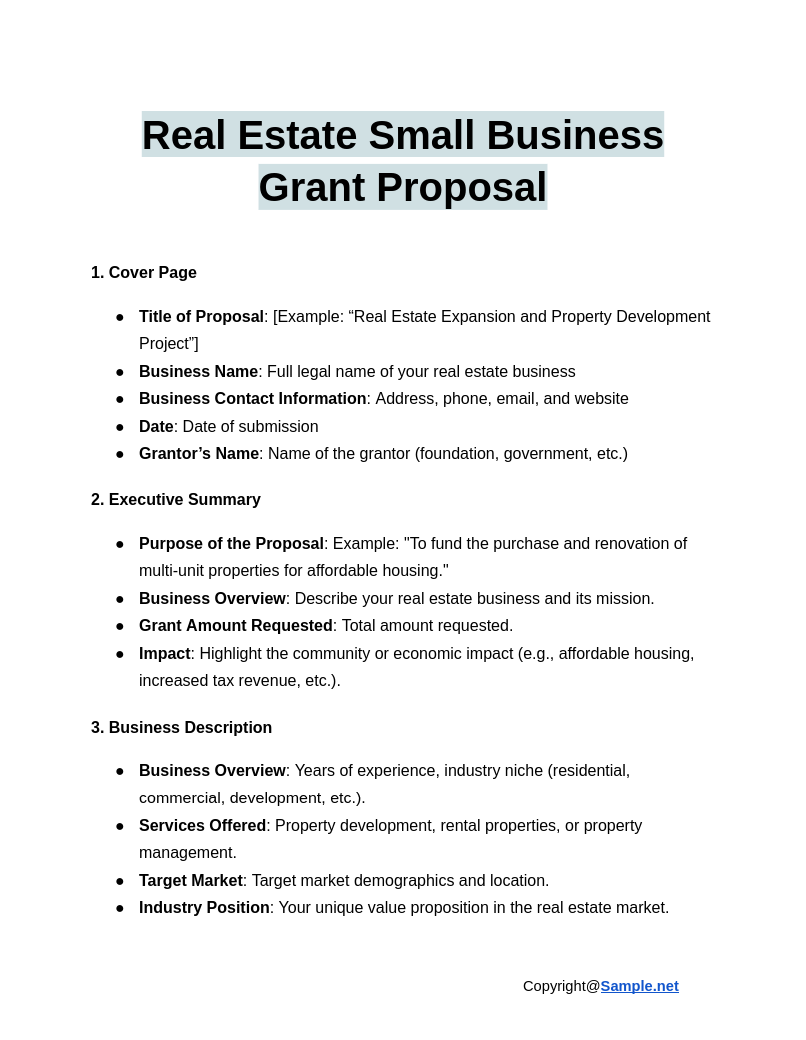
Real Estate Small Business Grant Proposal
download now -
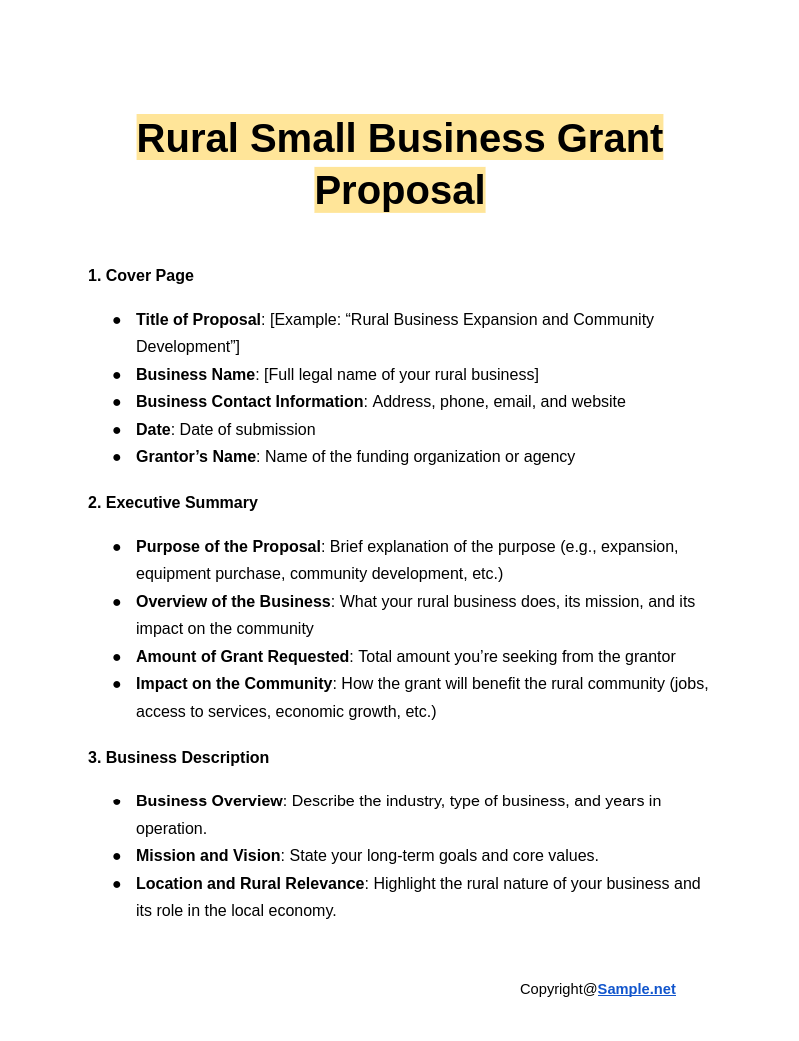
Rural Small Business Grant Proposal
download now -
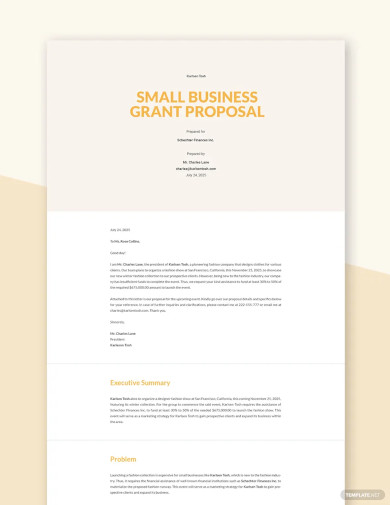
Small Business Grant Proposal Template
download now -
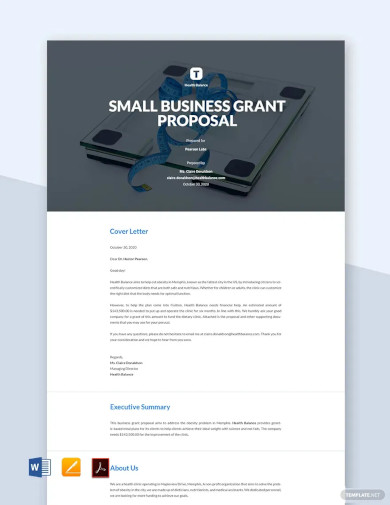
Sample Small Business Grant Proposal Template
download now -
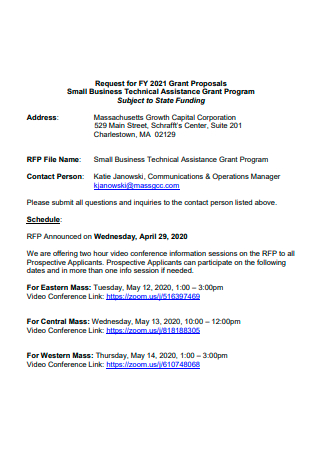
Small Business Grant Program Proposal
download now -
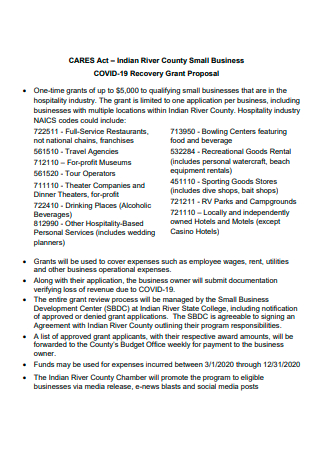
Small Business Covid-18 Recovery Grant Application Proposal
download now -
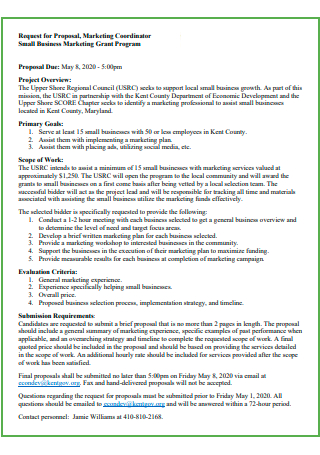
Letter for Small Business Marketing Grant Proposal
download now -
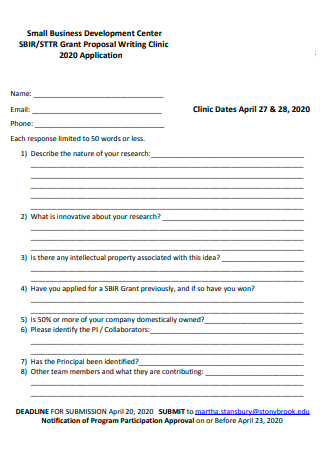
Small Business Development Non Profit Grant Proposal
download now -

Basic Small Business Project Grant Proposal
download now -
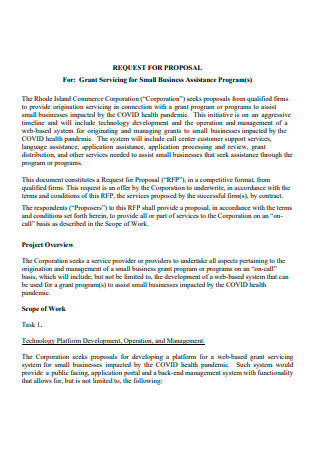
Small Business Grant Project Proposal
download now -
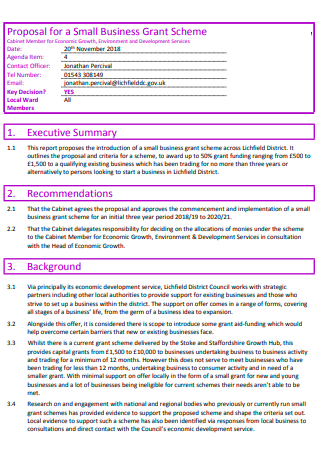
Small Business Grant Funding Request Proposal
download now -
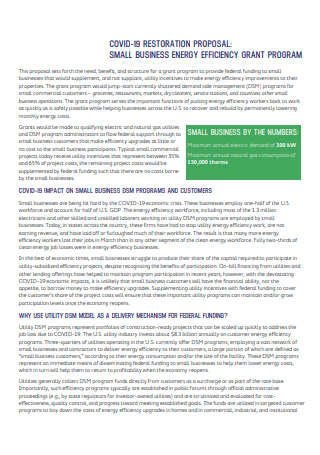
Small Business Grant Plan Proposal
download now -
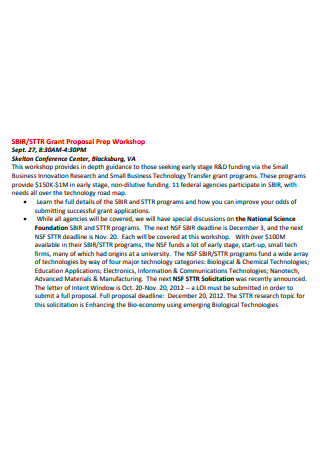
Small Business Grant Proposal Workshop
download now -
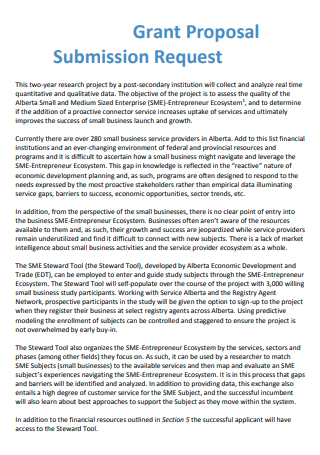
Small Business Grant Proposal Submission Request
download now -
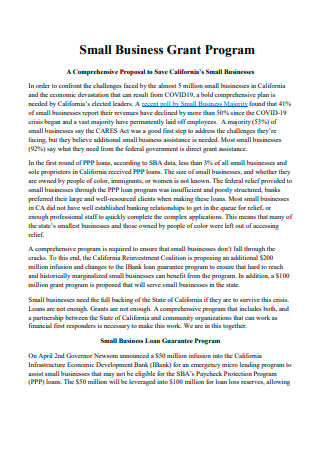
Small Business Grant Program Comprehensive Proposal
download now -
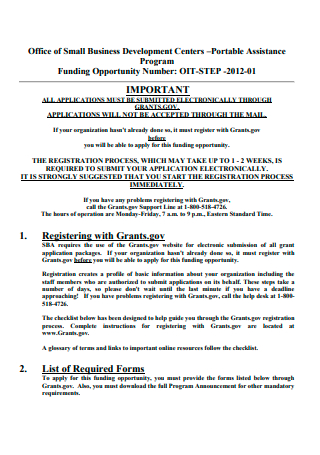
Office of Small Business Grant Proposal
download now -

Small Business Assistance Grant Proposal
download now -

Small Business Grant Proposal in PDF
download now -
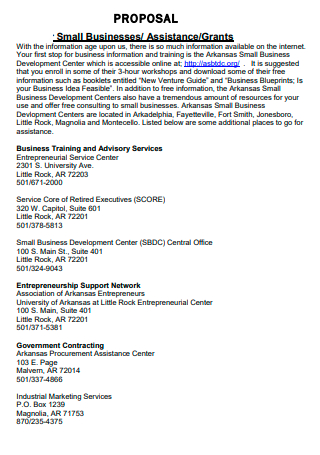
Printable Small Business Grant Proposal
download now -

Standard Small Business Grant Proposal
download now -
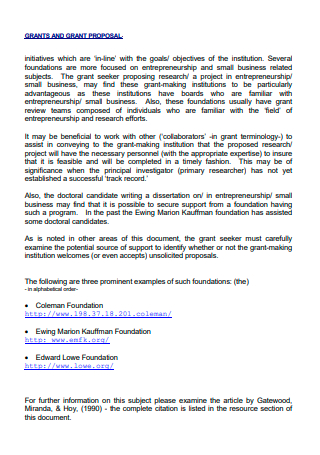
Small Business Grant Proposal Example
download now -
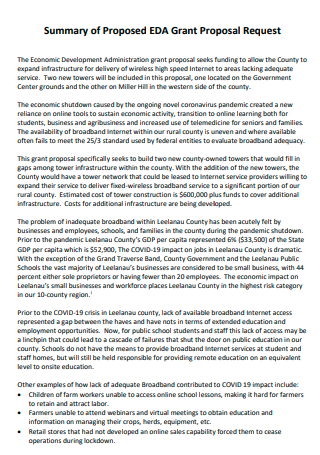
Small Business Grant Proposal Request
download now -
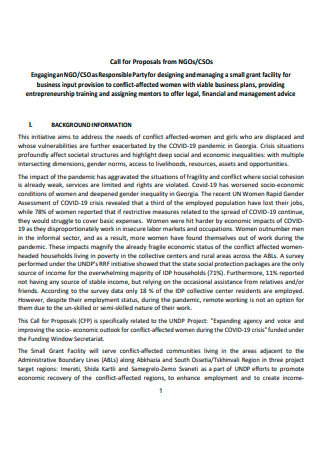
Small Business Grant Call For Proposal
download now -

Simple Small Business Grant Proposal
download now -
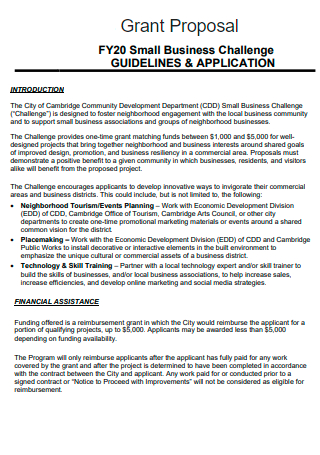
Small Business Challenge Grant Proposal
download now
FREE Small Business Grant Proposal s to Download
Small Business Grant Proposal Format
Small Business Grant Proposal Samples
What is a Small Business Grant Proposal?
Important Elements of a Small Business Grant Proposal
Steps in Writing an Effective Small Business Grant Proposal
FAQs
What causes are eligible for grant funding?
What is a state grant?
Why is a grant proposal preferred by small businesses compared to taking a business loan?
How long does it take to prepare a grant proposal?
How do I know if my business is eligible for a grant?
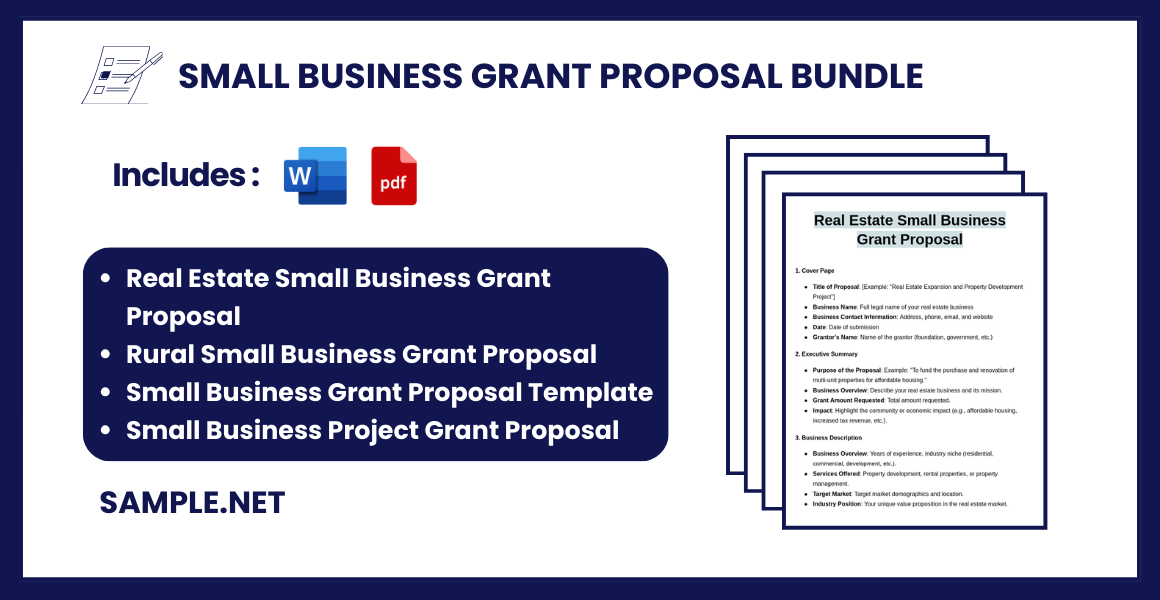
Download Small Business Grant Proposal Bundle
Small Business Grant Proposal Format
1. Cover Page
- Title of the Proposal: Name of the project or grant request
- Name of Your Business: Full legal name of your business
- Contact Information: Business address, phone number, email, and website (if any)
- Date: Date of submission
- Grantor’s Name: Name of the organization, foundation, or government entity offering the grant
2. Executive Summary
- Purpose of the Proposal: State the main goal of the grant proposal (e.g., expansion, research, or community development)
- Business Overview: Briefly describe your business, its mission, and key services/products
- Grant Request: The amount of funding requested
- Impact: Explain how this grant will impact your business, community, or industry
Tip: Keep this section clear and concise, ideally within 1 page.
3. Business Description
- Business Name, Address, and Legal Structure: Sole proprietorship, LLC, corporation, etc.
- Mission and Vision: Your company’s long-term objectives and guiding principles
- Company History: When the business was founded and key milestones achieved so far
- Products/Services: A detailed explanation of your products or services
- Unique Value Proposition (UVP): What makes your business different from competitors
4. Problem Statement/Needs Assessment
- Problem or Need: Describe the problem or need your project aims to solve
- Supporting Data: Use statistics, research, and community impact to justify the problem’s importance
- Grant Purpose: How will the grant funding address this specific problem or need?
- Relevance to Grantor’s Mission: Explain how your project aligns with the grantor’s goals
5. Project Goals and Objectives
- Main Goal: The overall objective you aim to achieve (e.g., expanding production, launching a new product, etc.)
- Specific Objectives: Break down the main goal into measurable and time-bound objectives
- Success Metrics: Explain how success will be measured (KPIs, customer growth, production capacity, etc.)
6. Project Design/Implementation Plan
- Project Activities: Step-by-step actions to be taken to achieve the objectives
- Timeline: Detailed timeline with key milestones and deadlines
- Staff/Team Involvement: List team members involved in the project, their roles, and responsibilities
- Partnerships and Collaborations: Mention any third-party partnerships (if applicable)
7. Budget and Financial Projections
- Total Budget: Amount required to complete the project
- Grant Request Amount: Amount requested from the grantor
- Detailed Cost Breakdown: Itemized list of how funds will be spent (salaries, equipment, marketing, etc.)
- Sources of Funding: Include other sources of funding you may have (business savings, other grants, loans, etc.)
- Sustainability Plan: Explain how the project will be self-sustaining after the grant funds are used
8. Business Impact and Outcomes
- Business Growth: Describe how the grant will support your business (revenue increase, job creation, etc.)
- Economic Impact: How the grant will benefit the community (jobs created, local economy, etc.)
- Scalability: If applicable, discuss your business’s capacity to scale after the project is complete
- Sustainability: Explain how the business will sustain growth after the grant funds have been used
9. Risk Assessment and Mitigation
- Potential Risks: Identify potential risks that could hinder the project (delays, supply chain issues, etc.)
- Mitigation Strategies: Describe actions you will take to avoid or minimize these risks
- Contingency Plans: Backup plans to ensure project continuity if a risk materializes
10. Supporting Documents and Appendices
- Resumes of Key Team Members: Demonstrate their expertise and experience
- Business Licenses and Permits: Proof that your business is legally registered and compliant
- Letters of Support/Partnerships: Letters from partners or organizations that support your project
- Financial Statements: Profit and loss statements, cash flow statements, and balance sheets
- Additional Attachments: Any other materials that strengthen your proposal (media coverage, awards, etc.)
11. Conclusion
- Summary of Grant Request: Restate the funding request and how it will be used
- Call-to-Action: Politely request the grantor’s support and express your gratitude for their consideration
- Contact Information: Provide the person of contact for follow-ups (name, phone, email)
12. Signature Page
- Signature of Business Owner/Director: Printed name, title, and signature
- Date of Submission: Date the proposal is signed and submitted
What is a Small Business Grant Proposal?
A Small Business Grant Proposal is a formal document submitted to organizations, foundations, or government bodies to request funding for specific business activities. This proposal highlights the need for financial assistance and outlines how the funds will be utilized. The proposal typically includes an executive summary, business description, project plan, budget details, and supporting documents. It serves as a persuasive tool to demonstrate the business’s growth potential, societal impact, and ability to achieve measurable results with the grant funds.
Important Elements of a Small Business Grant Proposal
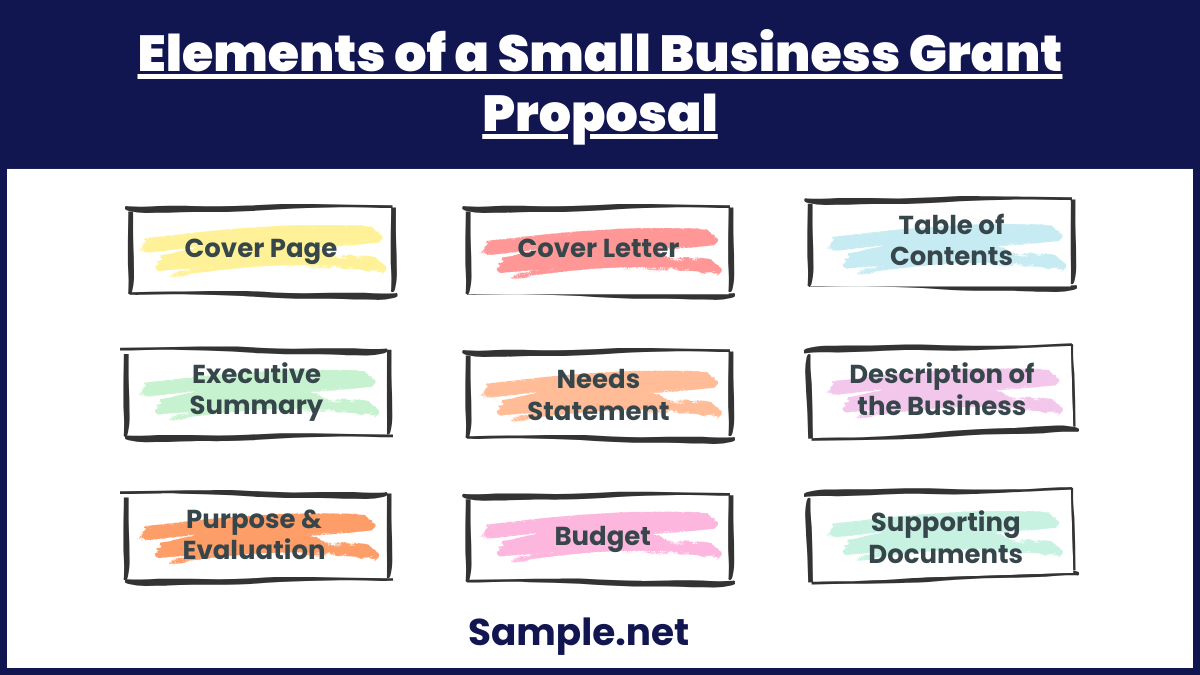
Here are the elements that comprise an effective small business grant proposal; These are the basic elements and keep in mind that unique ones may exist on your proposal depending on the small business that you’re planning to start.
Steps in Writing an Effective Small Business Grant Proposal
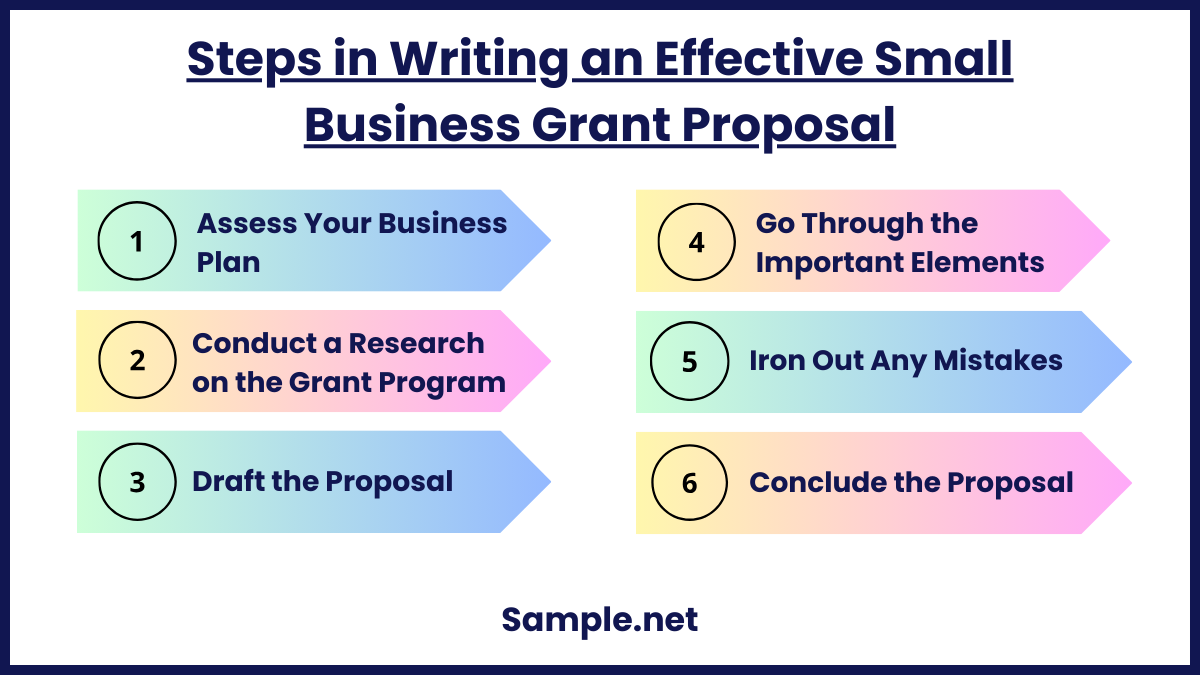
One of the most important ways of securing grants for your small business is to write an effective proposal document. Sure, it may take some time and effort, but when the grant application is successful, it’s well worth the effort. With that being said, here are the steps to be taken in creating this document.
1. Assess Your Business Plan
In this first step, make sure to conduct an assessment of your business plan first before creating a proposal. In this step, make sure to examine your business plan and compile a list of all you know about your company’s mission and ambitions. An assessment is needed because the proposal committee wants to know not just what kind of business you run, but also what your goals are for that firm. Always ensure to take the effort to write this information down ahead of time for yourself.
2. Conduct a Research on the Grant Program
After assessing the business plan, this step will then follow. When you’re trying to apply for grant funding for the implementation small business, it is good practice to conduct research on the program itself first. Study the funding program, its goals, and the people in charge. In other terms, do some preliminary research to see how you may modify the grant proposal so that it will match the grant program’s standards. Understanding the proposal committee’s perspective can assist you in writing the pointers needed for a successful proposal.
3. Draft the Proposal
After conducting the research on the granting program, and after creating your proposal points that will suit the program the best, this step will then follow. In this step, begin composing your first draft by expanding on each point in your outline. This initial draft does not have to be good or flawless because it is only a draft and you will be able to improve it later. You must highlight the elements of your small business that the sponsor would like the most. Their criteria or recommendations for drafting the paper will provide you with hints as to what they are.
4. Go Through the Important Elements
As you draft the proposal, it is essential that you go through the important elements of it. The important elements of the grant proposal include the needs statement which tells the grantors why the funding is needed for your small business, the description of your target market, the purpose of the grant funding (ex. acquisition of more staff and sophisticated equipment), the budget spreadsheet section of the proposal (which should detail how much funds do you need and if there are any external sources), and any other supporting documents that the grantors may require.
5. Iron Out Any Mistakes
After writing down the important elements of the grant proposal, this step then follows. As you iron out any mistakes in the document, Edit sentences as needed to ensure that your thoughts are clear and concise. You may read it aloud to yourself to get a sense of how it flows. This stage may take a lot of time since a significant amount of rewriting is to be expected. Look for more meaningful to replace those that serve as fillers. Substitute complex jargon with ones that are much easier to understand. Correct any typographical, spelling, grammatical, or stylistic problems. Also, make certain that your entire proposal is consistent with your initial summary and plan.
6. Conclude the Proposal
After everything has been done, it is now time to perform this procedure. In this step, take your time to create the conclusion part, which should be around one paragraph long, to reaffirm your request for grants and need in one line and explain how your small business grant proposal forms will continue the initiative if financing is no longer available. Also, take a moment to appreciate the foundation for the opportunity to apply, and include a final request for help.
FAQs
What causes are eligible for grant funding?
Grant funding will not be available for every initiative. Applicants must fulfill the eligibility standards given in the grant proposal rules, which means they must fall into one of many categories that are eligible to receive grant funding. For example, an organization that provides free employment training schedules to physically or mentally challenged persons would be automatically eligible for funds from numerous awarding organizations provided it could demonstrate its work ethic, legitimacy, and financial stability.
What is a state grant?
State grants refer to funds that are awarded by state governments to qualified individuals/organizations in order to fund specific projects, initiatives, or small businesses. The application process in a state grant is generally not complex, however, the rewards that the receiving party will get from the state are generally less in amount compared to, let’s say, private grants or federal grants.
Why is a grant proposal preferred by small businesses compared to taking a business loan?
Grant funding might be an excellent method to obtain the funds you require to start or develop your business. They are frequently less restricted than smaller business loans, and the process of application is much easier. If your grant request is accepted, you may be able to access additional resources such as mentoring, networking opportunities, and seminars. You can also see more on Non-Profit Grant Proposal.
How long does it take to prepare a grant proposal?
Depending on the complexity of the grant, it may take several weeks to prepare a comprehensive proposal, as it requires research, drafting, and multiple revisions.
How do I know if my business is eligible for a grant?
Check the eligibility criteria of the grant provider. Requirements often relate to business size, industry, location, and the nature of the project for which funding is requested. You can also see more on Project Grant Proposal.
